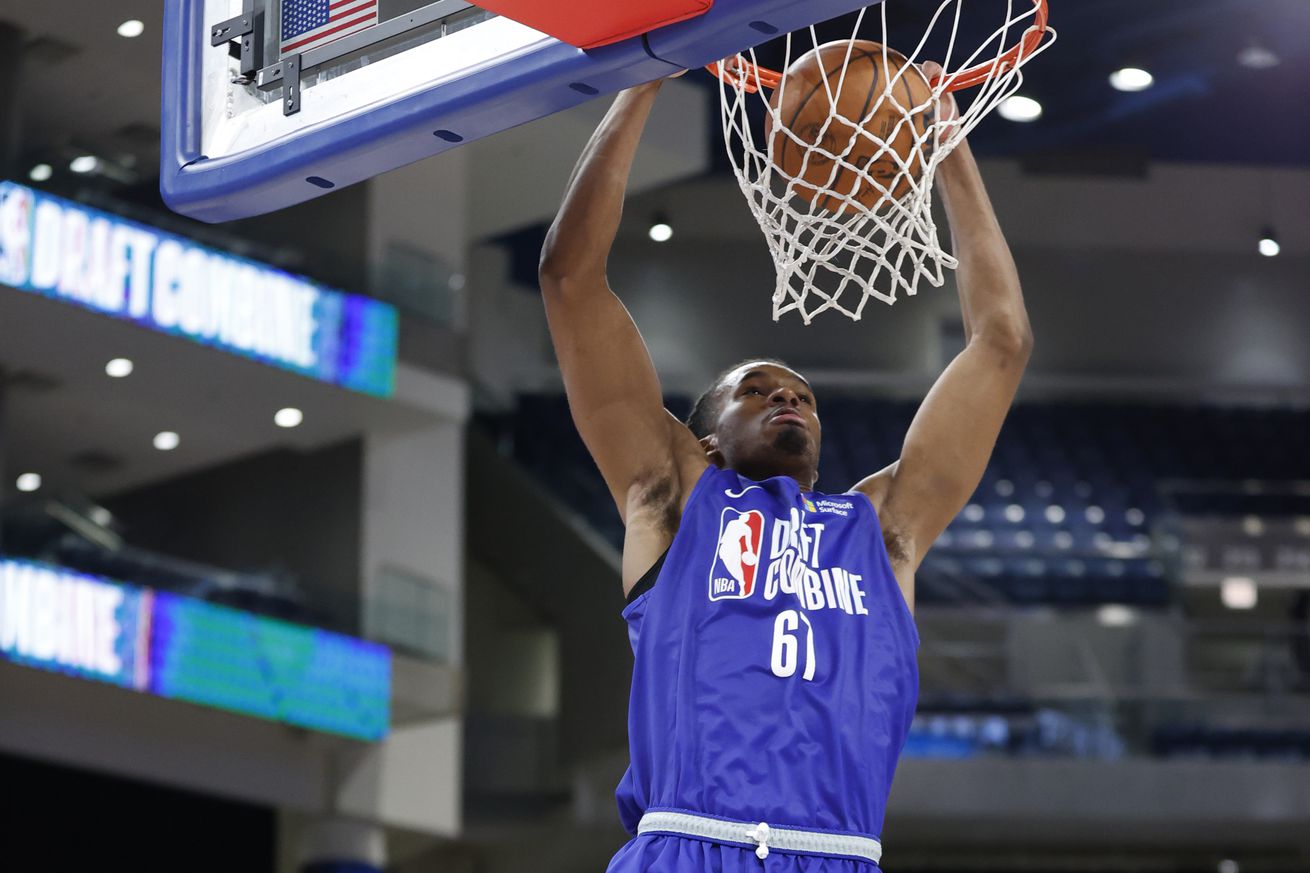
This is not the year to “need” a forward.
Last time, I wrote about centers. Today, let’s talk about forward prospects for the 2024 NBA Draft.
It won’t take long.
The strength of this year’s draft (such that it exists), at least according to the numbers as crunched by Ye Olde Draft Analyzer (YODA for short), is in the backcourt. I’ll get to them soon.
To my way of thinking, there are four positions in the modern NBA:
- Guards — traditional PG/SG types. These would be guys with guard skills like ballhandling, shooting, and passing but are too small to match up regularly with wings or forwards. Think Tyus Jones and Jordan Poole from last year’s Wizards.
- Wings — traditional SF/SG types who could play at either spot but aren’t really big enough to take on true forwards and aren’t skilled enough to be a primary ball handler. Think Corey Kispert or Bilal Coulibaly.
- Forwards — traditional PF/SF types. In the modern game, they have shooting, ball handling, and some playmaking, but they’re generally bigger and a little slower than guards, and they’re not trustworthy as primary ball handlers. Think Kyle Kuzma, Deni Avdija or Eugene Omoruyi.
- Centers — the big men who patrol the paint…for the most part. The position is evolving — at least for some guys with skills like the ability to shoot from deep — but for the most part they’re battling in the paint and around the rim. Think Marvin Bagley III, Daniel Gafford, and Tristan Vukcevic.
When it comes to this year’s forward prospects, YODA is thoroughly unimpressed. Just two have first round grades, and one other was close. Another five are worth looking at in the second round.
Let’s start at the top:
- DaRon Holmes II, Dayton — Might really be a center, but if he really is, he’d fall into the “close” to a first round grade range. In the numbers, he looks fine — efficient scoring with solid shooting from two and three (though so-so from the free throw line). Not bad on the boards. More assists than turnovers. Decent steals and blocks. In this draft, he should probably go 8-12 (though in a more typical draft, he’d be more likely to fall out of the lottery). Pretty standard physical profile at the combine. Already 22 years old.
- Tyler Smith, G League Ignite — The Ignite was a trainwreck of a team, and I’m not saying this year’s group caused the league to shut down the program, but they certainly didn’t make a case for keeping it. Smith scored well at the combine (though not well enough to boost his YODA score), and he was reasonably efficient on offense despite cataclysmically bad guard play. He shot 36.0% on a high volume of threes. What else? Good offensive rebounding, some steals and blocks, not a boatload of turnovers. Consensus mock drafts have him going 20th, which seems about right. If he’s sitting there when the Wizards pick at 26, they could do worse than a 6-10 forward with some athleticism and shooting.
Now to the guys who are close to first round grades.
- Keshad Johnson, Arizona — Older prospect (23 years old), who shot well (59.9% on twos and 38.7% on a decent volume of threes) and did okay on the boards. Fairly low usage overall, and not a ton of steals, blocks or assists. Kind of a standard issue decent forward, who if he lands in the right spot and works very hard might make a nice 8th, 9th or 10th man.
And the prospects who YODA thinks are second round picks or undrafted free agents:
- PJ Hall, Clemson — High usage but didn’t wow with efficiency. He shot just 31.5% on 6.3 three-point attempts per 40 minutes. On the other hand, he got to the free throw line 6.3 times per 40, suggesting he was stressing collegiate defenses at least somewhat. Rebounding was okay. More turnovers than assists.
- Tidjane Salaun, Cholet Basket — He’s currently the 12th pick in the Tankathon consensus mock draft, and there’s basically nothing in the numbers to see why. Maybe he’ll move up if he tests well athletically. In terms of production, he was inefficient on offense with subpar shooting on twos and threes, his rebounding was below average, he wasn’t a playmaker, and his steals and blocks were low. Despite averaging just 2.2 turnovers per 40 minutes, he had more turnovers than assists.
- Oso Ighodaro, Marquette — Might end up needing to play center in the NBA, which might not be ideal because his wingspan was just 1.5 inches longer than his measured height — well below average for an NBA prospect. He leaps well but that didn’t exactly translate to in-game production — he was an anemic rebounder, and he produced relatively few steals and blocks.
- Tristan Da Silva, Colorado — Excellent three-point shooting (39.5% on 5.6 attempts per 40 minutes). Excellent agility times at the combine. Already 23 years old. Hard to see why he’s considered a first round pick — at least in the numbers.
Did I miss someone who interests you? Let me know in the comments.
